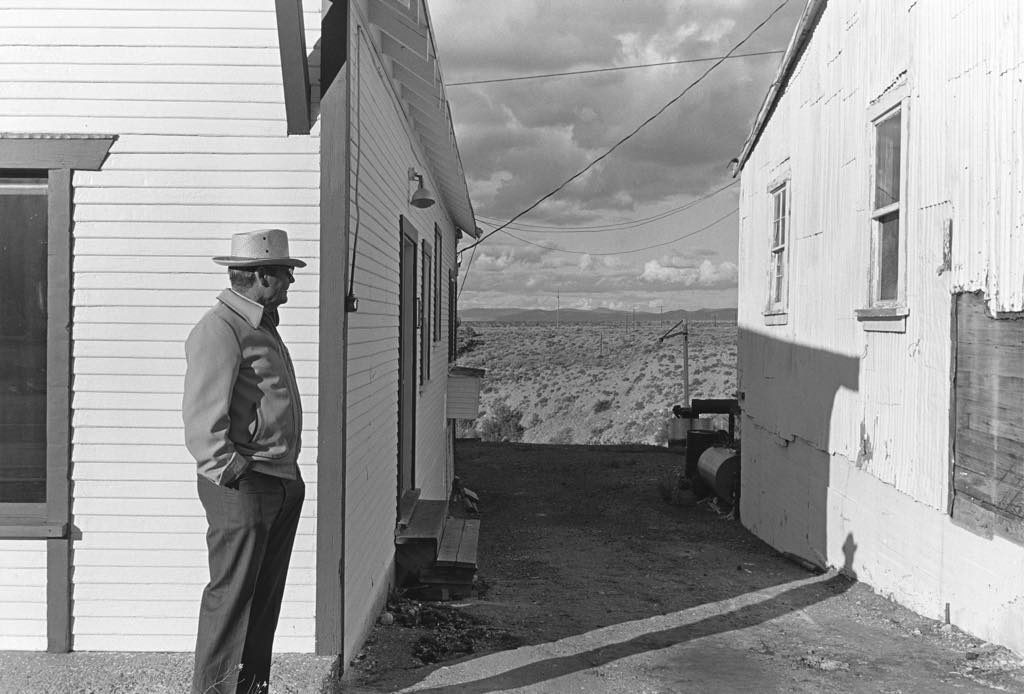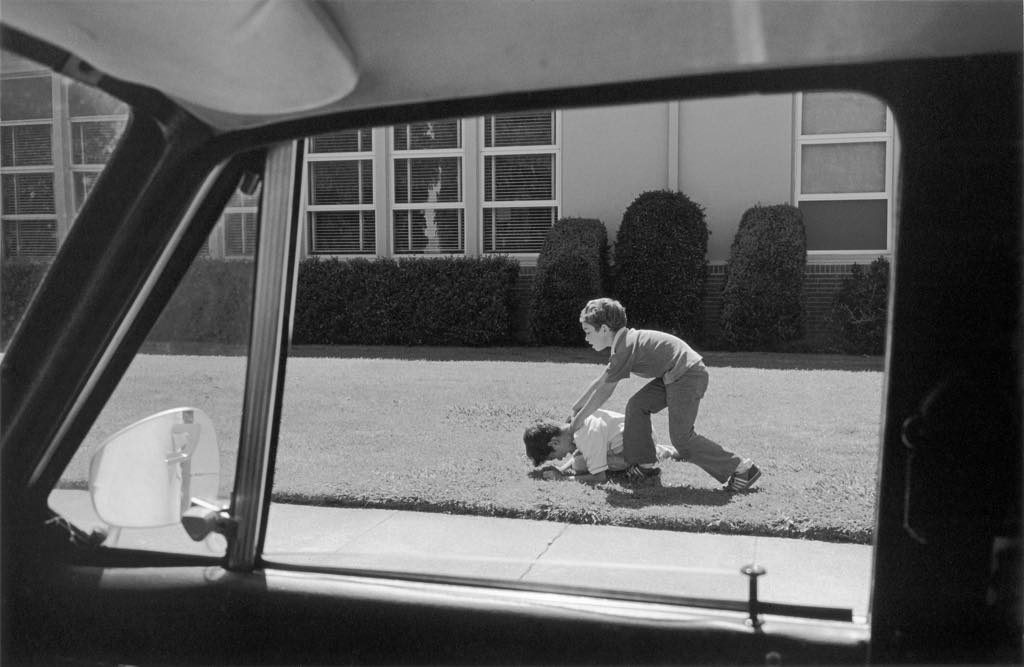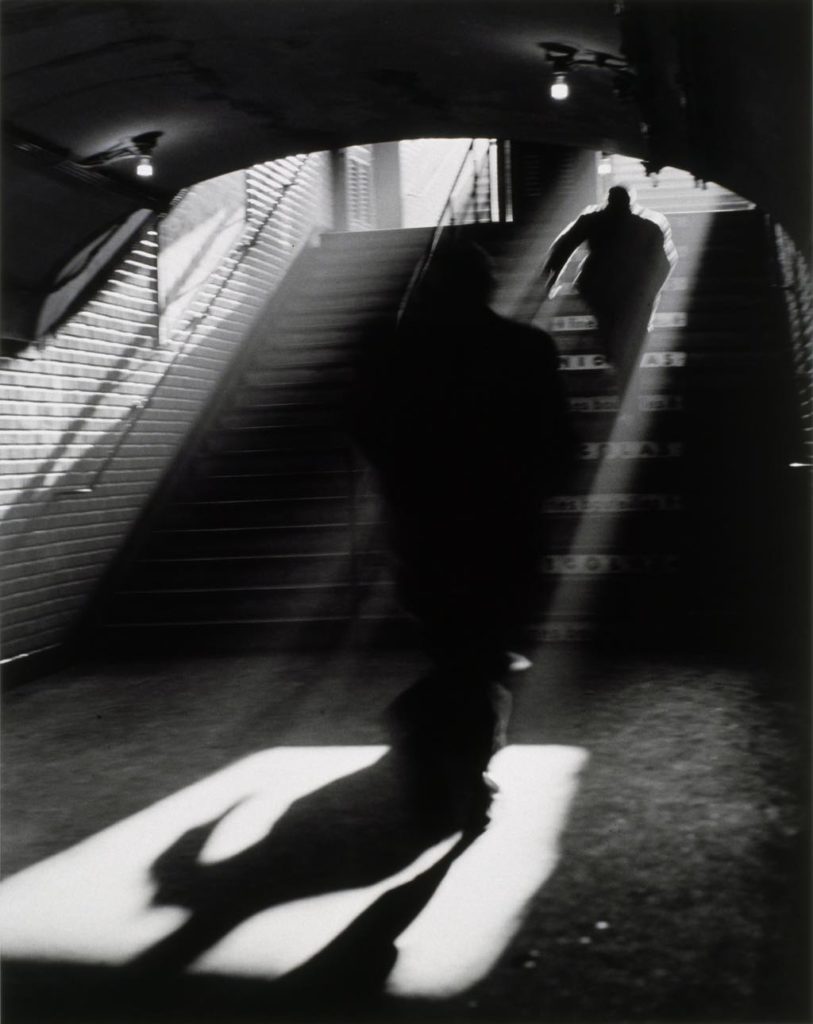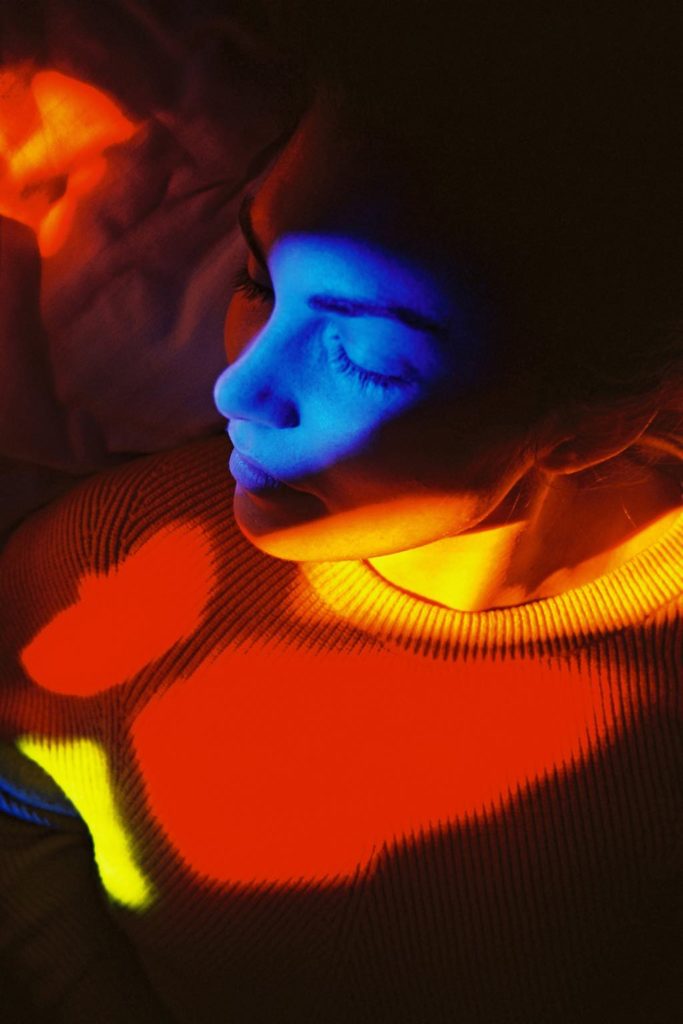
American photographer Henry Wessel (1942-2018), the subject of the exhibition “Henry Wessel: A Dark Thread” at the Maison Européenne de la Photographie (MEP), had the unusual habit of not looking at the contact sheets of his photos until a year had passed since he had taken them so that he would not be influenced by “the subjective experience of taking the photo.” This self-enforced objectivity may explain the almost clinical feeling in many of these black-and-white images, drenched in white light and far from the wry charm and humor of “humanist” photographers like Henri Cartier-Bresson, Robert Doisneau or Willy Ronis.

These are pictures, especially in the “Incidents” series, that raise questions. What is that couple discussing so intently in the middle of a tennis court? Why is that young person sitting cross-legged, head in hands, in a tiny patch of shade under a small tree, seemingly in the depths of despair? What caused the bruise on the leg of a faceless woman who has lifted her skirt to show it to the photographer?
For this exhibition, Wessel, who died before preparations for the show were finished, sifted through decades’ worth of contact sheets to find pictures he could group together to create “fictional narratives.” A great fan of film noir, he even asked some American detective novelists to write short stories inspired by one of his images. Three of the stories have been translated into French and are available in book form at MEP.
There is something ultra-American about Wessel’s snaps of street scenes, with their Hopperesque feeling of emptiness and detachment. Even an image shot through a car window of a little boy apparently strangling another looks like a tableau rather than something that really happened.

The distancing that marks these images becomes even more pronounced in a series of otherworldly pictures taken at night in the Sunset Park neighborhood of Los Angeles, where the lack of humans and the artificial appearance of the houses and trees are intensified by the streetlights.
Complementing Wiesel’s show is a second exhibition, “Fil Noir” (not a typo; this is a punning translation of “A Dark Thread,” the title of Wessel’s exhibition, into French), a selection of images from MEP’s archives that have a film noir feel to them, as if they were stills from a real movie.
Although many of these photos, by the likes of true-crime photographer Weegee and the great Hungarian–French Brassaī may be familiar, it is great fun to see them grouped together under the film noir theme.

There are some wonderful photos here by Sabine Weiss (notably Scène du Métro, 1955), in which the huge, distorted shadow of a man running up the Métro steps in the dark is caught in a shaft of light.
Willy Ronis and Robert Doisneau get a look-in here with some of their darker images, as does Les Krims, who made a disturbing series of staged images of the naked corpses of murdered women with covered faces (“The Incredible Case of the Stack o’ Wheat Murders, 1970-71).

After these two excellent but not exactly uplifting exhibitions, it comes as a relief to see “Maison Rouge” (through July 14), a show of beautiful, vividly colored works by Marguerite Bornhauser, although some of them, too, are filled with foreboding. The storytelling theme is continued here with images that suggest the beginning of a narrative. Varied in size, format and subject matter, they were made recently with the nearly extinct Cibachrome process, using surviving paper stock and chemicals.
Favorite